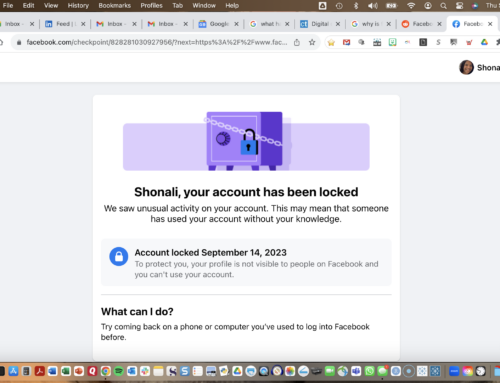 Guest Post by Shanan Sorochynski
Guest Post by Shanan Sorochynski
If you are reading this blog, chances are you don’t need to be told about the merits of social media.
It is ubiquitous.
Most of the advice we received from early adopters years ago is hardwired into our brains: Listen first! Respect people’s time! Offer something that is relevant and valuable! Measure! Measure! Measure!
This isn’t anything new.
These are tactics you would apply to customer/client relations even if you worked in an old-time general store selling beans out of a bin.
Businesses have always had to listen to customers.
They have always had to identify their customers’ needs and wants.
They have always had to deal with word-of-mouth.
Social media just changes the way these things happen … and how fast people are punished by the marketplace if they don’t do it effectively.
Image: Pink Ponk via Flickr, CC 2.0
So, while the goals are the same, for some – especially those who don’t use the tools – social media communications is still something flashy and new.
That is a good and a bad thing. Flashy and new gets attention. But it also comes with suspicion.
I’ve found that the easiest way to make the flashy and new more palatable is to relate it back to what is already familiar to the person I’m speaking with.
Again, not a new concept.
I work in External Relations, a department that is all about creating and maintaining relationships. In the basest of terms, what we do is make friends and get stuff (ie. increased enrollment, donations, public support, government funding, etc. etc. )
All things the department did before social media.
We engaged our various audiences by showing how we were relevant to them.
On a good day we’d get them to not only take notice of our organization but respond to our calls for action (ie. donate, enroll, attend an event, make post-secondary education an election priority, etc.)
But whether you use face-to-face communication, print, radio, television or the web, you still have to give in order to get.
With social media, we offer timely information – in addition to print, radio, television and our homepage.
We still share our institution’s story. Social media simply gives us the opportunity to include a greater number of those stories and from a more diverse group of contributors. We can include more of the community’s voice.
We still distribute information that is relevant to our audience it is just distributed differently.
We still monitor the media, that media has just expanded to more spaces.
The list goes on.
It is a thread of logic I’m now using when I talk about developing our social media program.
Slowly (and then not-so-slowly) faculties, departments and student groups created social media pages to commucate with their respective audiences without institutional guidelines or structures in place to support these initiatives.
So, why create them now? It is not “our” content, so why manage it?
The easiest way I find to answer these questions is to relate it back to something familiar: our main website.
Few would argue that our organization shouldn’t have a website. The website is a massive collection of web pages from our various faculties, departments and offices.
Our social media presence is a massive collection of web pages from our various faculties, departments and offices … they are just not on our server.
Yes, it is an overly simplistic explanation.
But, it is one that helps start (as opposed to end) a much-needed conversation.
 Shanan Sorochynski manages the University of Regina’s first official blog: YOURblog. Previous to this she was the managing editor of U of R Report, the University’s faculty and staff internal publication, and a print journalist in Manitoba.
Shanan Sorochynski manages the University of Regina’s first official blog: YOURblog. Previous to this she was the managing editor of U of R Report, the University’s faculty and staff internal publication, and a print journalist in Manitoba.










[…] It’s Just Social Media. Don’t Freak Out. (waxingunlyrical.com) […]
I particularly liked this sentence, Shanan: “Our social media presence is a massive collection of web pages from our various faculties, departments and offices … they are just not on our server.” I know it’s a simplistic explanation, but it gets the point across, and that’s critical. Nicely done!
@Shonali
Thanks. I only wish I would have thought of it a year ago. ;)
@Shanan If I had a nickel for every time I’ve thought that (wish I would have…) I’d be rich by now! So just think of it this way – at least you thought of it now. Right?
Your “social media presence” is a far cry from “social media” and it’s a disservice to tell people they shouldn’t freak out. It’s very easy to create a Facebook page but freaking out is warranted when that person doesn’t know what to do next.
Are you suggesting they should “freak out” as opposed to find solutions to their issues (ie. hire a consultant, do research, etc.).
I love this. It’s what I have been telling my clients and potential clients for some time now. When I speak, I let them know that Social Media is really the first of all the media that can almost perfectly mirror all the different tasks they conduct in their own brick and mortar businesses, and that it SHOULD be more natural. And it will be, if they approach it that way, rather than merely looking at it as another marketing tool.
@KenMueller
One of the things I have really enjoyed is watching people who were initially very skeptical about social media thrive with it.